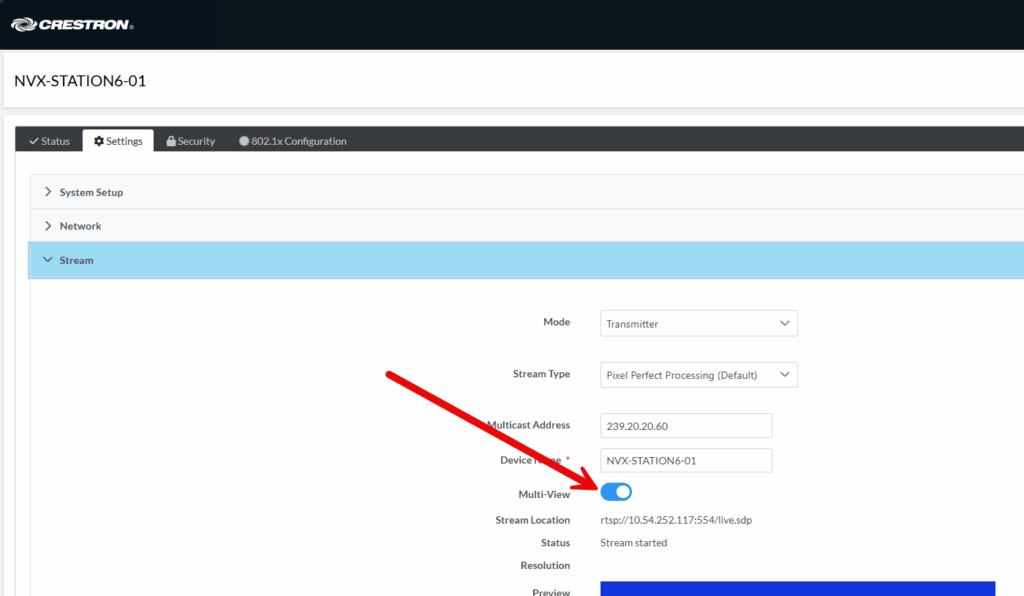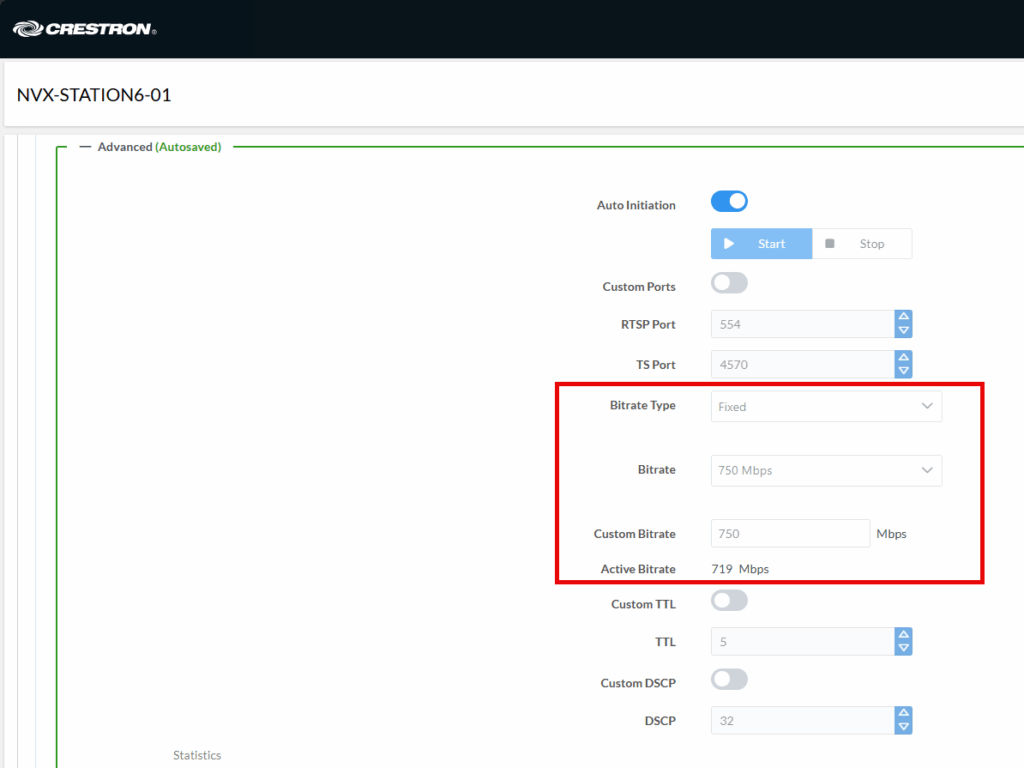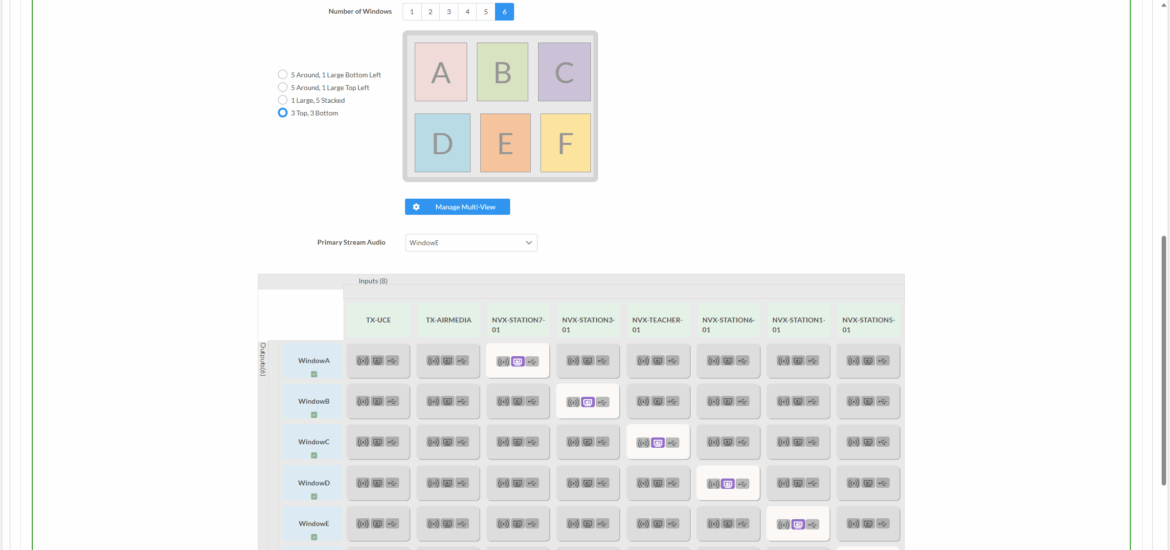In February, at ISE, Crestron showed a new feature to the DM-NVX-38x family of devices. Multi-View.
Multi-View is the ability to use a single one gigabit connection to receive up to six NVX streams. That’s actually quite impressive.
I happened to have some NVX units for a project so I thought I’d test the new features and write a few words about it. What the new feature actually means, what it can do and what to consider when deploying a solution.
Lets start with what Multi-View actually is.
Over the past seven or so years since the NVX line of products was released, Crestron has added over 100 new features since the initial firmware release. Some big ones, some smaller, but the fact that the product is evolving in such a pace and that both new and old products are compatible with each other is quite impressive.
The latest addition is Multi-View, the ability to receive up to six NVX streams from transmitting devices to a single receiver. Still using a one gigabit connection.
The streams can be displayed in one of 18 different predefined layouts (at ISE, it was 16 layouts so two more added). Sure, it’s not completely free positioning like in some more advanced video wall or projection mapping systems, but it is a good set of layouts that will cover most use cases in any normal installation.
All the different layouts are described in text and pictures in the manual: https://docs.crestron.com/en-us/9496/Content/Topics/Configuration/DM-NVX-38X/Settings-DM-NVX-38X.htm#StreamRoutingReceiverModeOnly
Two examples:
First, an NVX stream in full screen, and then a secondary stream as a PiP (Picture-in -Picture) in the bottom right corner (there are layouts for the other corners to):

Second, a videowall consiting of two rows of video, each with three different sources, for example, a video wall in a control room:

What else can we do, besides displaying sources?
There is for example a way to add text overlay to each source so that we know what each source actually shows. Or we can add a coloured frame around the video where the current audio stream come from.
But what do we need to do to get this to work?
It’s quite simple.
Both transmitters and receivers need to be DM-NVX-38x models (lets hope other transmitters likte the DM-NVX-E30 and DM-NVX-36x will work in the future but only time will tell…).
Besides the actual hardware, two things are needed, first, you need to activate the multi-view setting in both transmitter and receiver. This will prompt a reboot of the NVX device:
Transmitter:

Receiver:

After the reboot, the NVX device will start to transmit a secondary video stream that will be used for the smaller video windows in the layouts.
An NVX device will use one multicast address for the main video stream. It will also use a multicast address for the secondary audio stream, the AES67 audio from the video if this is enabled. Default behavior is that the secondary audio stream will be the primary audio stream multicast IP address plus one. That is, if the primary stream for the video is 239.10.10.10, the secondary audio stream will be 239.10.10.11 unless you make an active choice to change this.
The multiview will add a third multicast address, 239.10.10.12.
And this is important! Make sure you don’t have another multicasting device on the third address here before you enable Multi-View in the transmitting NVX!
If you use an NVX Director, this has already been taken care of since the Director will use multicast addresses 8 addresses apart (what will the remaining five addresses be used for in the future?)
It is also important to understand that the Bitrate Type of the transmitter will be locked to “Fixed”:

What next?
So, what will we use this new feature for? Will we show several TV channels on one TV when there are two games on at the same time that we want to follow?
Will we use it for recording a main video stream along with a PiP of the person presenting without the need of additional equipment?
Or will we simplify our control room installations by using a single receiver for our video wall?
The use cases are there, just waiting for us to find them. Do you have any ideas for this new feature?
